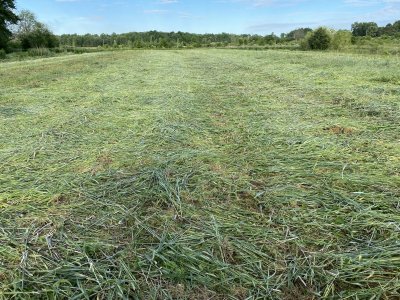I don’t know if I’ll have the time and willpower to do this every year but in 2022 with the intention of avoiding tilling and chemicals I [1] rolled standing grains from the fall food plots down over buckwheat seed early June, and then ran the disc over that perpendicular to ensure a good kill since I don’t have a crimper (this is the picture) then [2] I think it was the last week of July I rolled the buckwheat down over brassica seed, then [3] broadcast a little more brassicas late August and grains (rye and wheat) in September. At some point I added oats but can’t remember what layer that was. It took some planning but the plots did great and the deer have been hammering em in the late season. So the planning for this started in fall 2021, and just like any effort the rains do need to cooperate. Worst case scenario the discs can save you with some light tilling. Corn and beans is another story, I don’t know how to pull that off!
One issue I see is I’m putting a lot of carbon down, so nitrogen might be an issue… but if I add too many annual clovers in the fall mix I’m not sure how well they’ll terminate in the June squash process.

One issue I see is I’m putting a lot of carbon down, so nitrogen might be an issue… but if I add too many annual clovers in the fall mix I’m not sure how well they’ll terminate in the June squash process.

